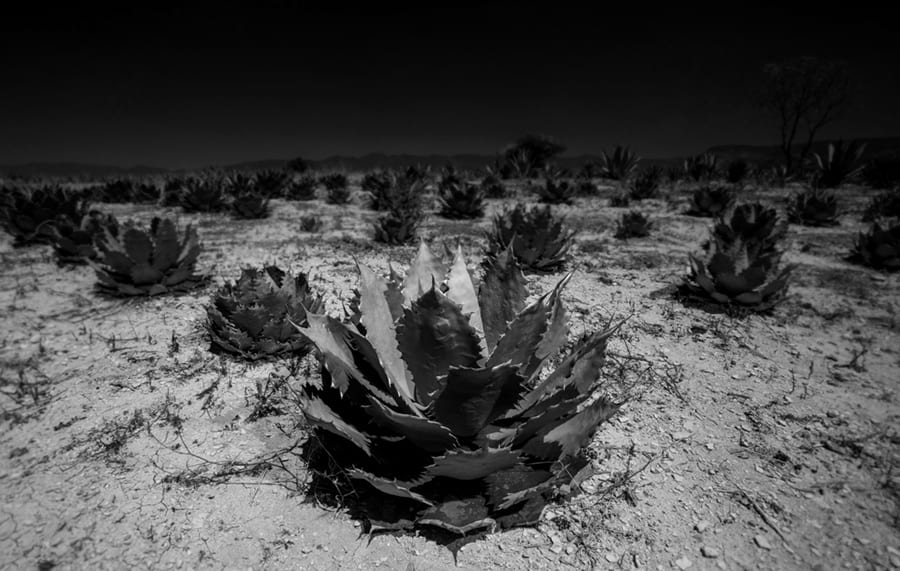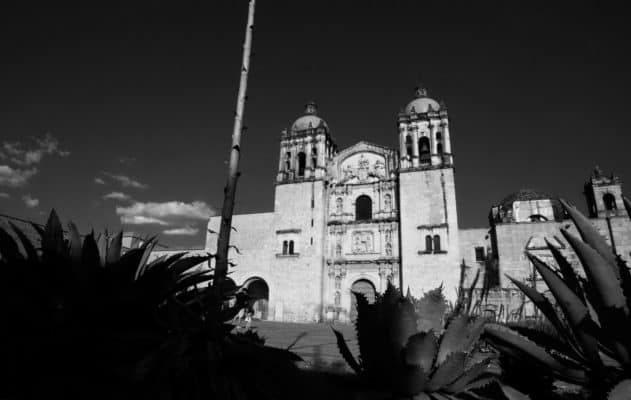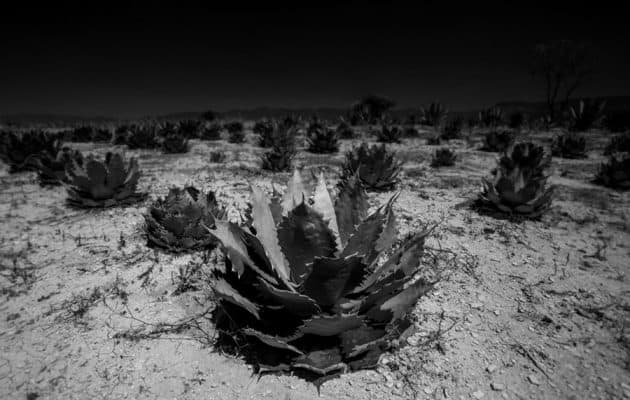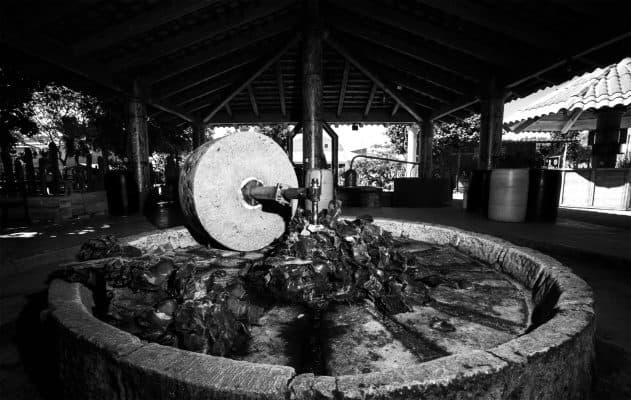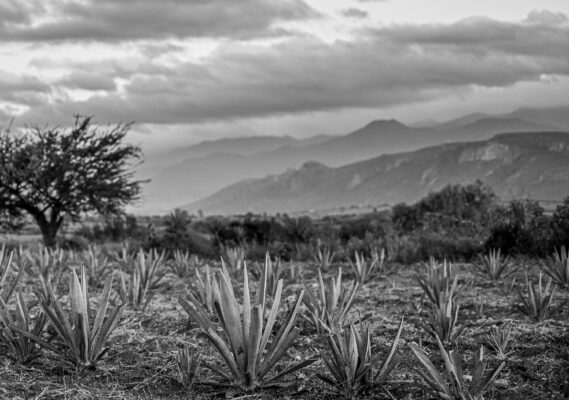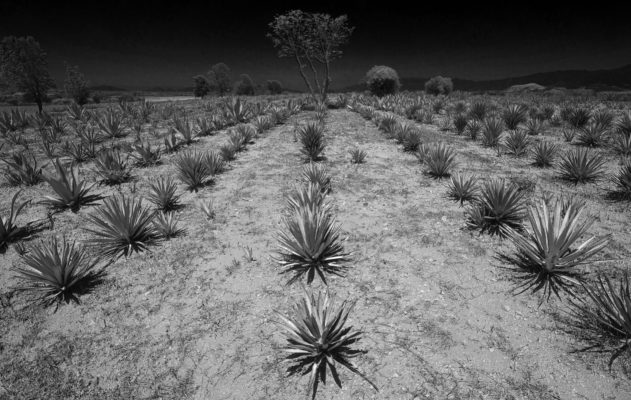The making of Mezcal is a magical process, and its beauty lies in its diversity. Each mezcalero maestro has his own heritage and the way in which each one breathes life into his Mezcal is unique. A thousand decisions and actions, some large, many microscopic, will influence the final result, giving each Mezcal its own story, its own identity.
There are 7 main stages in the process of making a handmade Mezcal. The longest can take up to 20 years, the shortest just a few hours. But they are all equally important to us, because by treating our agaves as treasures, we ensure that we get an exceptional Mezcal.
1. Cultivation:
Agave takes its time to soak up the flavours of nature and it takes an average of 8-10 years for an Agave of the espadín type, the most common in the making of Mezcal, to reach full maturity. This is when the sap is at its sweetest and the heart is at its largest. Some species of agave take up to 20 years to reach maturity. Throughout the agave’s life, the maestro mezcalero takes great care to ensure that it produces the best Mezcal.
The agaves are cherished until the day when the best specimens are chosen for harvesting.
2. Harvesting and extraction of the piñas:
When the leaves are ripe, they are separated from the heart, called piña – pineapple in Spanish – because it looks like one once the stems have been removed. Once the pruning process is complete, the maestro mezcalero will set about extracting the heart of the agave still buried in the earth. The heart can weigh up to 80 kilos at this point.
A coa, an agricultural tool that resembles the fusion of a hoe and a shovel, is used to extract it. The heart is then taken to the palenque, where the Mezcal is produced.
3. Traditional cooking:
It is at this stage that the Mezcal receives its smoky flavour and sweet notes. The piñas are chopped to make them easier to cook and then placed in an oven dug into the ground on volcanic stones that have been set on fire. The agave hearts are then methodically placed on the hot stones and covered to cook them “à l’étouffée”. The cooking time varies from 2 to 5 days depending on the flavours required. The longer the agaves are left in the oven, the more pronounced the smoky flavour of the Mezcal will be.
It is also this slow cooking that allows the fermentable sugars to be extracted from the agave fibres.
4. Manual grinding:
When the agave hearts have finished cooking they are ground in a stone mill until they are completely crushed. This traditional crushing is time consuming and tedious, but it ensures that the fibres are not broken and that the quality of the sugars is preserved. Once the crushing is complete, the wort is obtained, which will be used for fermentation.
5. Fermentation:
This process takes place in large oak vats, in which the must is mixed with spring water. At Devoción we let this mixture ferment for ten to twelve days. It is at this stage that the flavours of the mezcal will multiply and intensify.
6. Double distillation:
Once fermentation is complete, the mezcal is distilled. Using a copper still, a technique brought back by the Spanish conquistadors in the 15th century, the alcohol vapours are cooled and liquefied a first time. The remaining fibres of the must are removed, and the distillation process is repeated a second time to give life to the Mezcal.
7. The very special tasting:
Before being bottled, the Maestro Mezcalero invites everyone who has contributed to the creation of this treasure to taste it. Sitting in a circle, the workers take their time to taste the nectar and celebrate its coming into the world. It is at this very moment that the sensible gives way to the senseless and a new world opens up to us (see Mezcal Tasting Habits)


